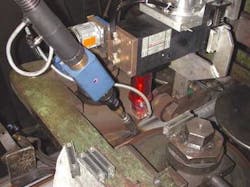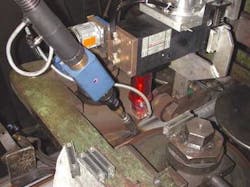Hybrid welding of line pipes
Bremen, Germany—A process to improve product quality while reducing cost in the production of longitudinally welded stainless-steel pipes for offshore applications is CO2-laser GMA hybrid welding, which combines the advantages of conventional gas metal arc (GMA) welding with those of laser beam welding while minimizing their respective drawbacks.
At the Bremer Institut für Angewandte Strahltechnik (BIAS) a CO2-laser-GMA welding process as well as all components required for its industrial application have been developed as well as qualified for and implemented in an industrial environment.
First the process fundamental properties were studied, taking into consideration the interactions between laser beam and arc that defined parameters for the establishment of a stable process. With a characterization of welded seams, considering their mechanical and technological properties, before and after a heat treatment, it was possible to implement CO2 laser-GMA hybrid welding in the production of linepipes (273 mm in diameter with wall thickness of 5 and 8 mm) from supermartensitic X1CrNiMo 12-5—1 stainless steel. A mixture of argon and helium was used as the process gas.
A significant result, compared to filler-added CO2 laser welding was that hybrid welds proved to be 100 percent defect-free from pores or cracks; meeting all quality demands. Further, after an induction heat treatment, integrated into the production line hybrid welds, unlike laser welds, did not show any considerable hardness increase. Compared to three-pass GMA welding, a four-times increase in welding speed (up to more than 1.2 m/min) was achieved, being limited only by the production unit employed.
This work was produced by Claus Thomy, Thomas Seefeld and Frank Vollertsen at BIAS. For more information, e-mail [email protected].

